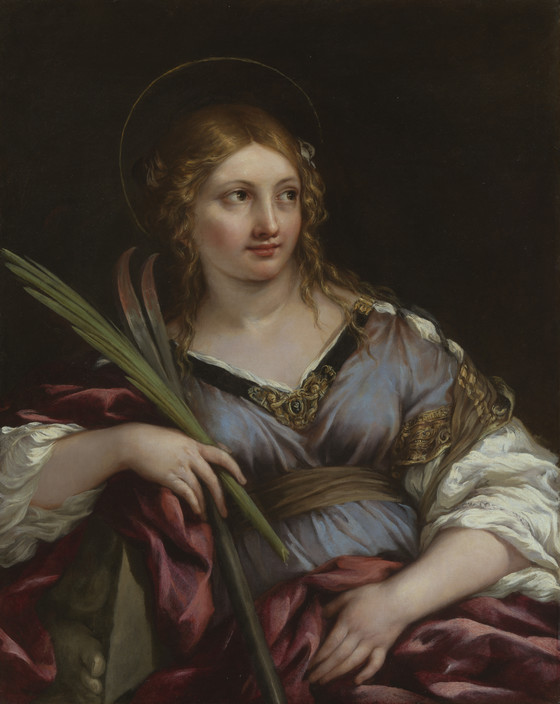Hidden in a private British collection for 160 years and unknown to Cortona scholars until recently, Saint Martina has never been exhibited or published before....
Hidden in a private British collection for 160 years and unknown to Cortona scholars until recently, Saint Martina has never been exhibited or published before. Its subject, Saint Martina, was intimately familiar to the artist, and the young Roman martyr frequently appeared in his work. An architect as well as a painter, Pietro da Cortona designed the church dedicated to the saint in the Roman Forum, executed a famous altarpiece depicting her martyrdom for the Siena Cathedral, and created other compositions in which the saint appears, such as The Madonna and Child with Saint Martina (c. 1645), acquired in 1984 by the Kimbell Art Museum Fort Worth, Texas. Paintings by Cortona can also be found in the Metropolitan Museum of Art, New York, and the Ringling Museum of Art, Sarasota, but his work remains rare in American museums.
Cortona was a prominent artist and architect of the Roman baroque period. A protégé of three popes—Urban VIII, Innocent X, and Alexander VII—he was also the official painter for a number of the wealthiest families in 17th-century Rome. To this day, Cortona's fresco ceiling in the Grand Salon of the Palazzo Barberini (now the Galleria Nazionale d'Arte Antica), painted in 1635, remains a major attraction in Rome. An illusionistic masterpiece, the ceiling is an allegory to the glory of the Barberini family that not only demonstrates Cortona's dexterity at organizing a complex composition but also displays his mastery of drawing and use of brilliant colors.
Saint Martina was a Roman virgin believed to have been martyred in the year 226 or 228 for her unwavering commitment to her Christian faith. Cortona has portrayed her in this painting as the embodiment of health and beauty even though she is said to have suffered numerous tortures, including being hung on a hook, before she was ultimately beheaded. Here she is shown holding the hook as well as a palm frond, a traditional symbol of saintly martyrdom; her right arm rests on a fallen structure, a reference to the Roman idols she refused to worship.
Saint Martina is one of the many generous gifts made by The Ahmanson Foundation to LACMA. The Foundation has continually supported the acquisitions of LACMA's Department of European Painting. LACMA Director Michael Govan said, "The Ahmanson Foundation has been the most consistent and generous donor to the museum in its history. Over the years, it has been through its support that the museum has been able to add masterworks by such artists as Guido Reni, Georges de La Tour, and Jacques-Louis David."
More...



